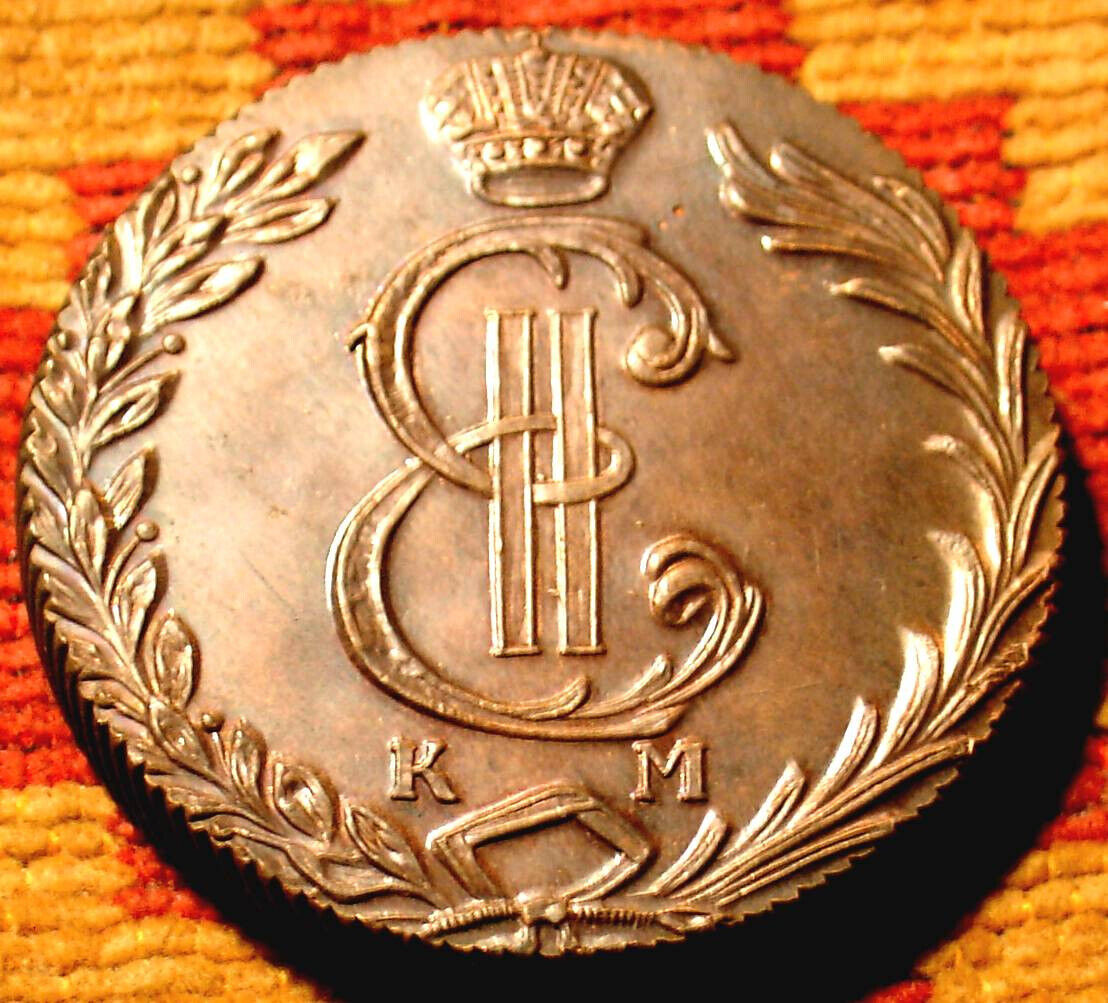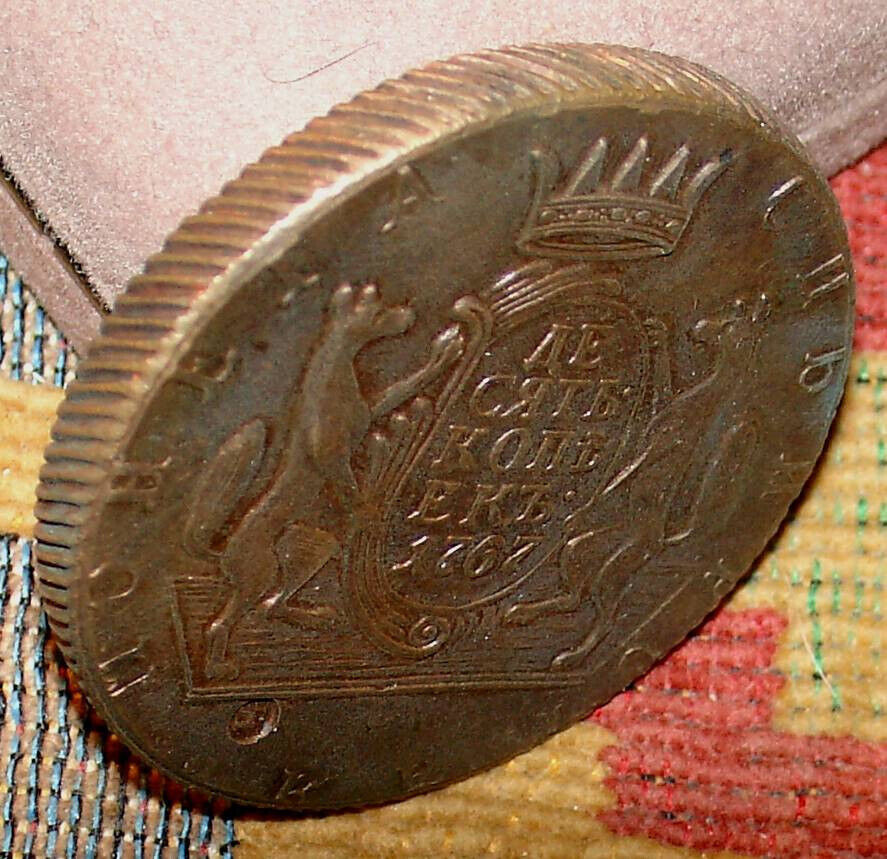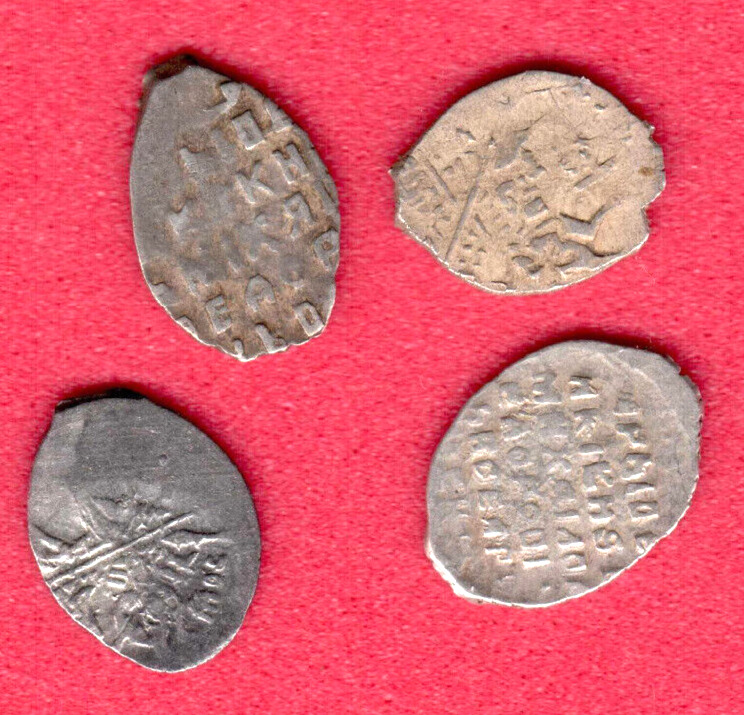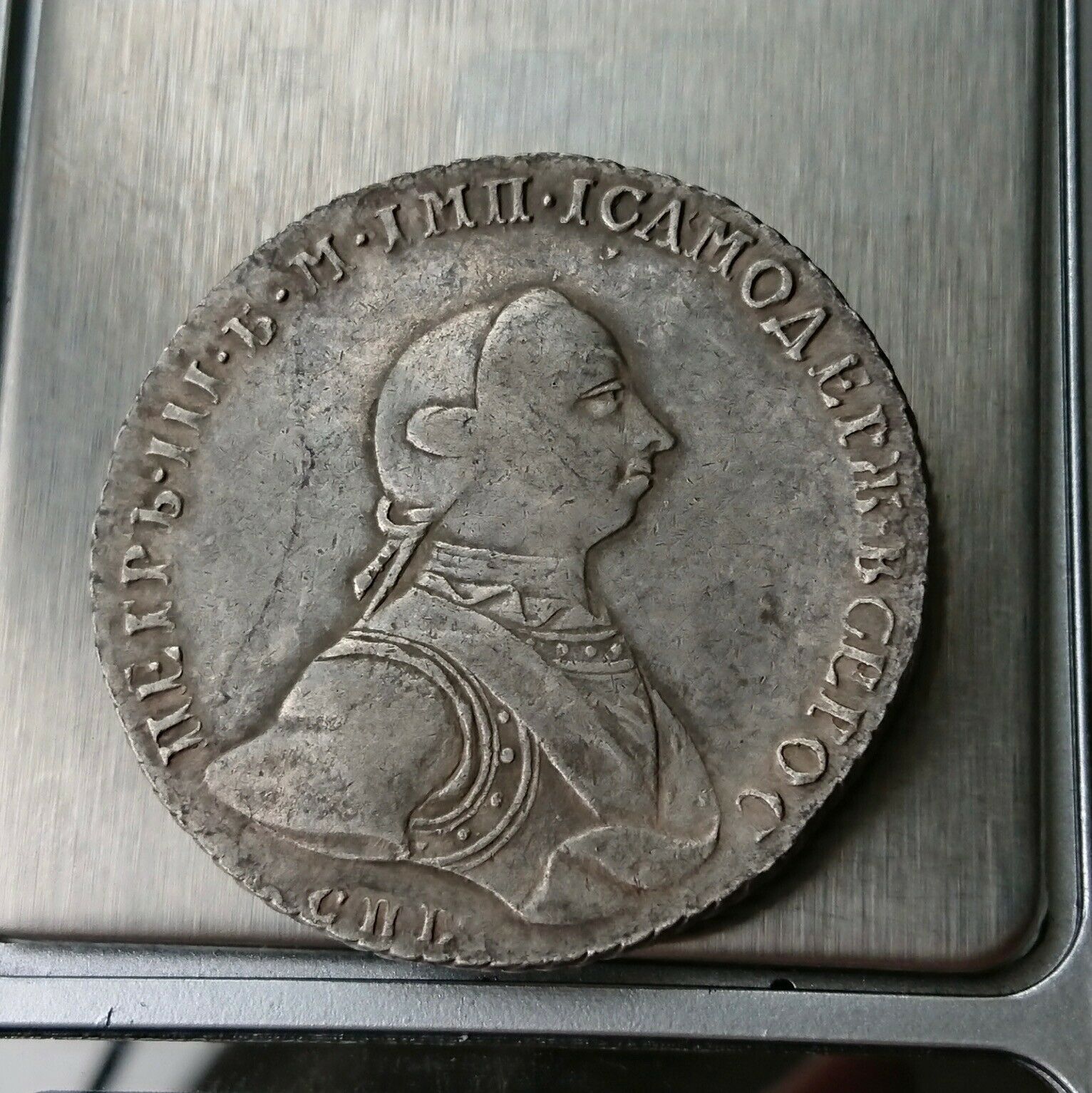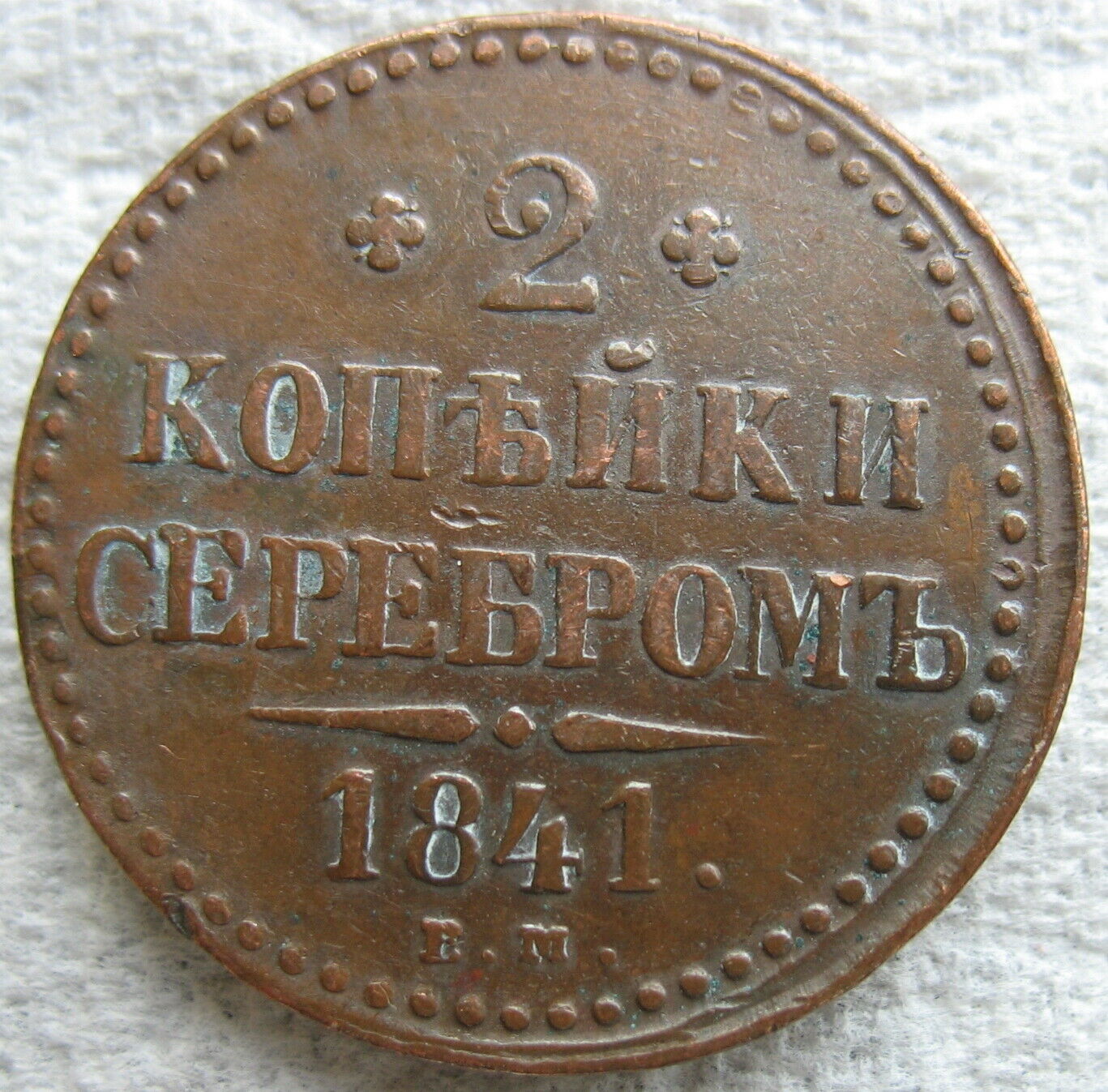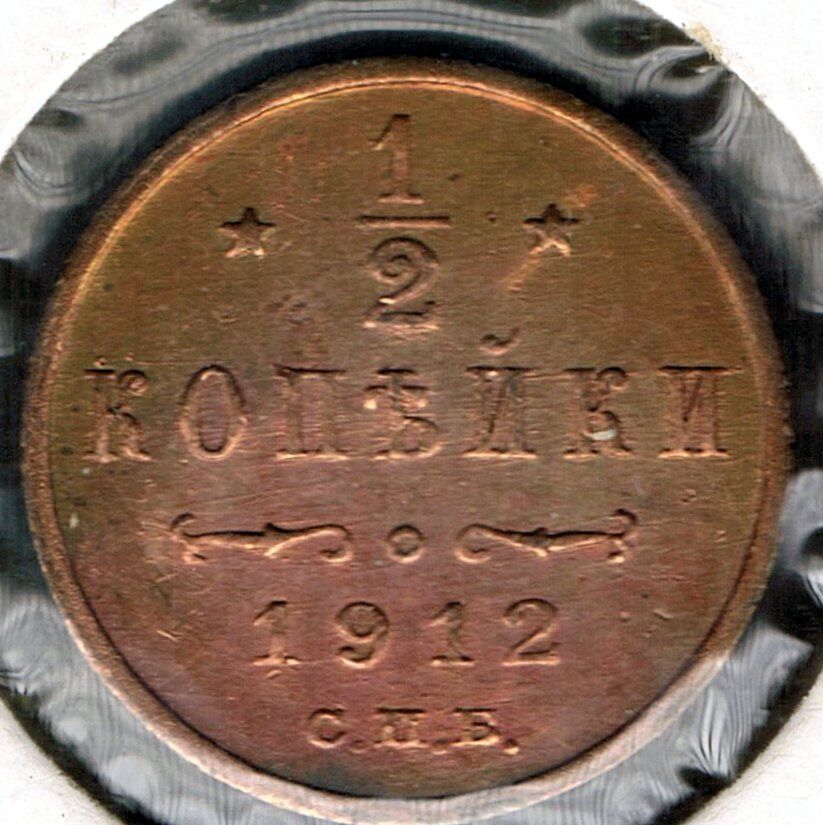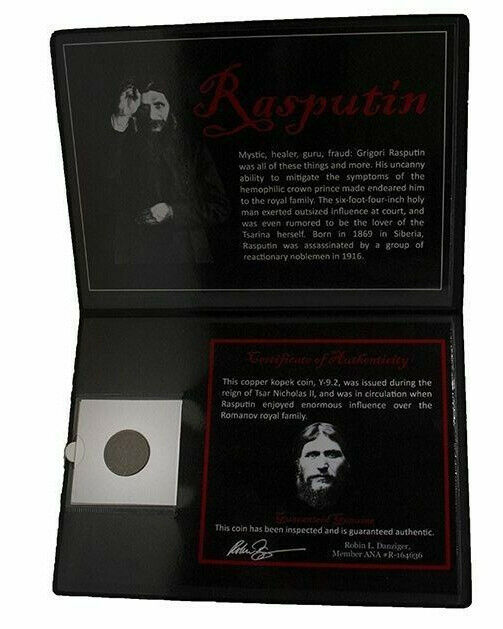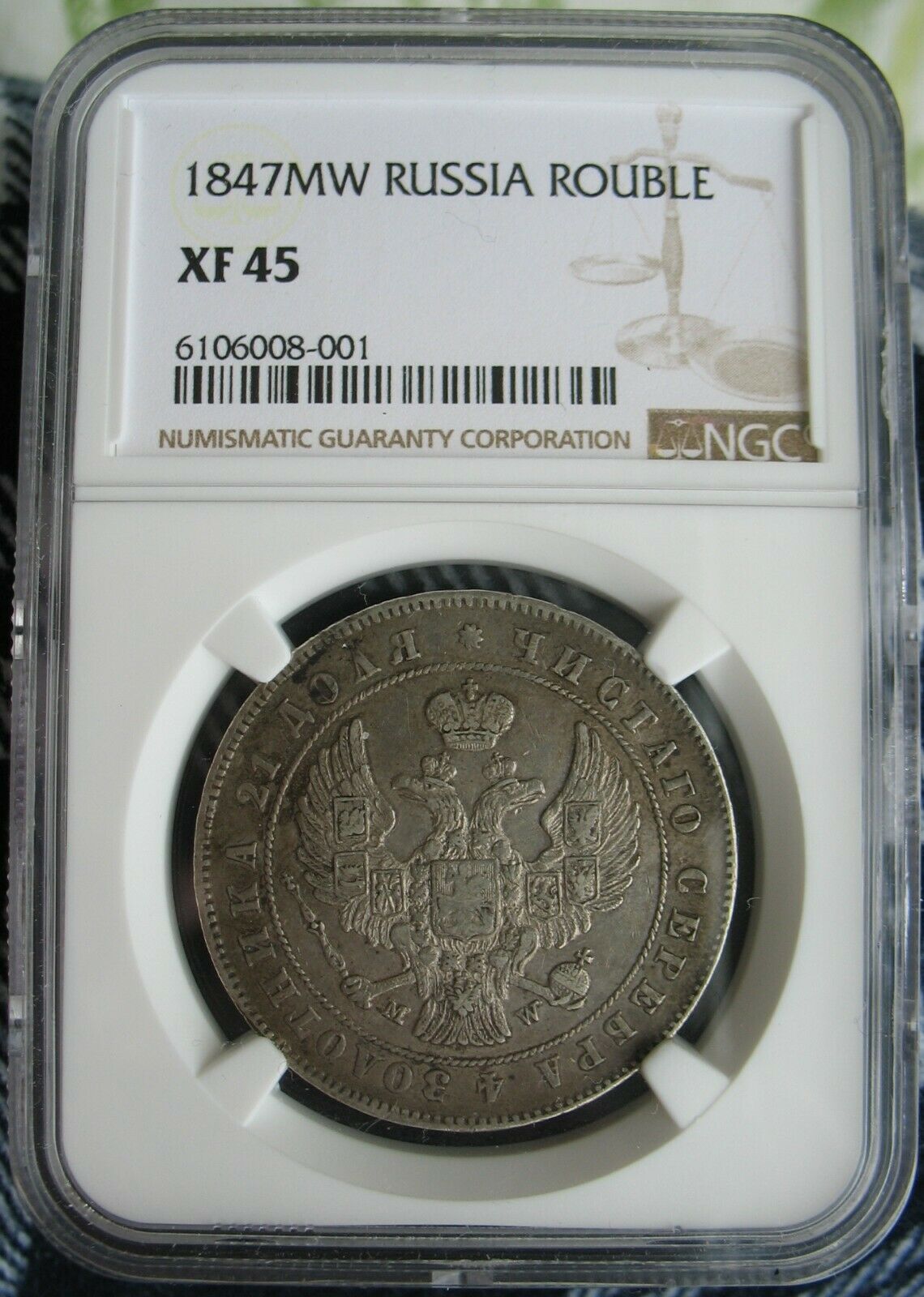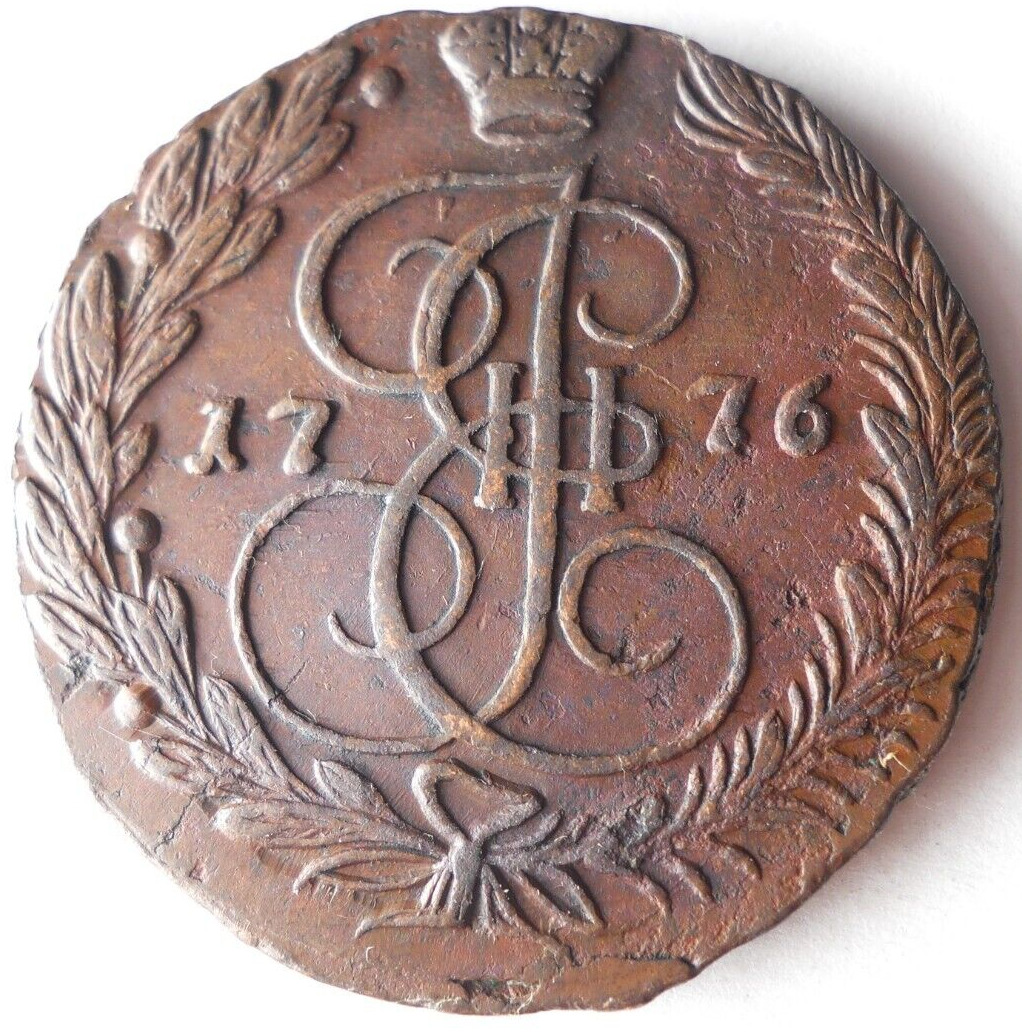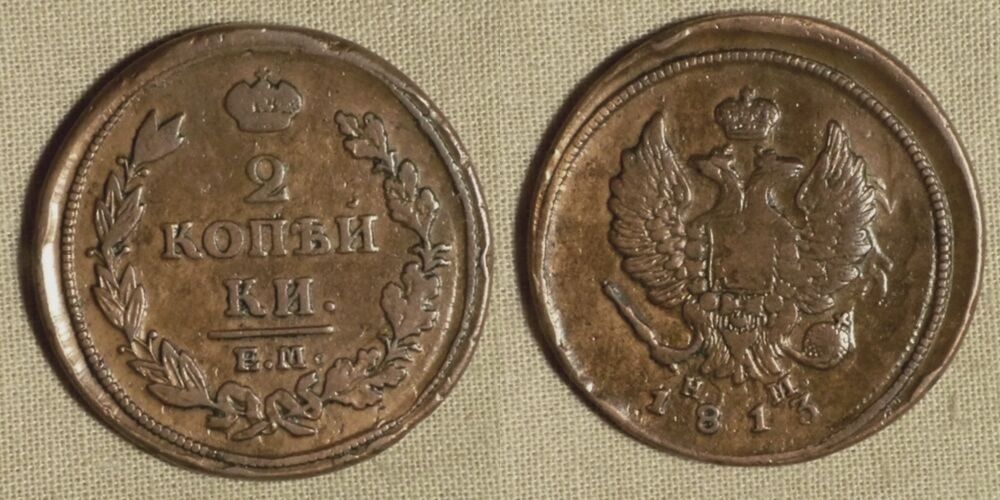-40%
RARE NOVODEL 1767 MM RUSSIAN COPPER COIN 10 K SIBERIA IMPERIAL RUSSIA EKATERINA
$ 514.79
- Description
- Size Guide
Description
VERY HARD TO FIND ! EXTREMELY RARE HUGE RUSSIAN , COPPER COIN ! RARE TYPE OF NOVODELS . HAS A ROUND STAMP-MARK ON LEFT BOTTOM , WITH LETTER N . DOUBLE HEADED EAGLE WITH MM MARKS ! DATED 1759 KM . TIME OF GREAT RUSSIAN TZARINA - EKATERINA THE GREAT ! NICE COLLECTIBLE UNCIRCULATED CONDITION ! PLEASE, SEE AUCTION PICTURES IN LARGE FORMAT - FOR MORE DETAILS. DIAMETER : 45 MM . WEIGHT : 71.4 GRAMS .IN LIFE - LOOKS MUCH BETTER , THEN ON PICTURES ! LOVELY BROWN CHOCOLATE PATINA !
RUSSIAN NUMISMATIC IS
VERY HOT
FOR COINS OF THAT PERIOD ! BUY THIS COIN FOR LESS PRICE, BEFORE PRICE SKYROCKETING. COIN MARKET ON BIG RISE NOW ! NICE AS A GIFT - FOR ANY ONE , INCLUDING YOUR SELF ! :)
SMART INVESTMENT !
FREE SHIPPING IN USA - WITH BUY NOW OPTION !
DON'T MISS IT !!!
NO RESERVE !!!
GOOD LUCK !!!!!!!
&;o)
PLEASE, VISIT OUR OTHER AUCTIONS BY CLICKING HERE :
See other items
!!!
Intelligent, ruthless, sexually insatiable: she was the most powerful woman in the world, dragging Russia 'out of her medieval stupor and into the modern world'.
Born Sophie Friederike Auguste von Anhalt-Zerbst, the daughter of a German prince, she was related through her mother to the dukes of Holstein.
In 1744, she arrived in Russia, as the Grand Duchess Catherine Alekseyevna, and married Peter, grandson of Peter the Great and heir to the throne. Russia at the time was ruled by Peter's mother, the empress Elizabeth.The marriage was an unhappy one and on her arrival in Russia, Catherine suffered from a form of pleurisy, which causes sharp pains in the chest. She had to have her blood let by a doctor four times in one day, which she claimed saved her life.
Catherine was intelligent and ambitious. During her husband's lifetime, she had at least three lovers and, if her hints are to be believed, none of her children were his. It is thought that she had affairs with Alexander Vasilchikov, Sergei Saltykov and Stanislaw August Poniatowski, among others.
Her husband had a mistress called Elizabeth Vorontsova. When Catherine fell pregnant with her second child, a girl called Anna who died aged four months, Peter did not believe it was his baby, causing an argument which led Catherine to spend a lot of time in her private boudoir.
When Empress Elizabeth died in January 1762, Russia was engaged in the Seven Years' War against Prussia. Peter, now emperor, pulled Russia out of the war and allied with Frederick II of Prussia. Foolishly betraying his actions, Peter prepared to be rid of his wife.
Catherine, however, had the support of the public and the army, and was proclaimed empress on 9 July 1762. Peter III abdicated and was assassinated eight days later. She was soon crowned in Moscow, beginning a 34-year reign.
During her reign, she reduced the powers of the clergy, continued to preserve friendly relations with Prussia, France and Austria and, in 1764, she specified Poland's borders and installed one of her old lovers as king of Poland.
A follower of the Enlightenment in 1767, she assembled a group of delegates in order to determine the people's wishes and compose a constitution. Unfortunately, it was considered too liberal and came to nothing.
In 1768, she went to war with Turkey, so as to concentrate on the importance of national grandeur. The war inspired patriotism in Catherine's subjects but, in 1773, a former officer of the Don Cossacks inspired the greatest uprising in Russia prior to 1917.
The movement spread rapidly and, in June 1774, Cossack troops prepared to march on Moscow. At this point, Russia won the war with Turkey and Catherine crushed the rebellion .
Catherine now realised that she needed to exercise more control over the people and that serf liberation would be intolerable to the owners, on whom she depended, and who would throw the country into chaos once they lost their income. Catherine thus focused on strengthening a system that she had labelled as inhuman.
She also enjoyed a reputation for being a patron of the arts, education and culture, writing a guide for the education of young noble women in 1764, as well as establishing the Smolny Institute the same year.
Catherine now realised that she needed to exercise more control over the people and that serf liberation would be intolerable to the owners, on whom she depended, and who would throw the country into chaos once they lost their income. Catherine thus focused on strengthening a system that she had labelled as inhuman.
Catherine also wrote fictions, comedies and memoirs while cultivating the talents of French intellectuals including Diderot, D'Alembart and Voltaire, with whom she corresponded for over 15 years.
She became the most-renowned and longest-serving female monarchs of Russia, with her reign seen by many as the Golden Age of Russia.
Catherine died in 1796 from a stroke which caused her to fall into a coma, from which she never recovered. She was buried in a gold coffin at the Peter and Paul Cathedral in St Petersburg.
She was succeeded by her eldest son Paul, who was thought to be the son of Peter as he resembled the late emperor. Catherine had three other children with different lovers.
